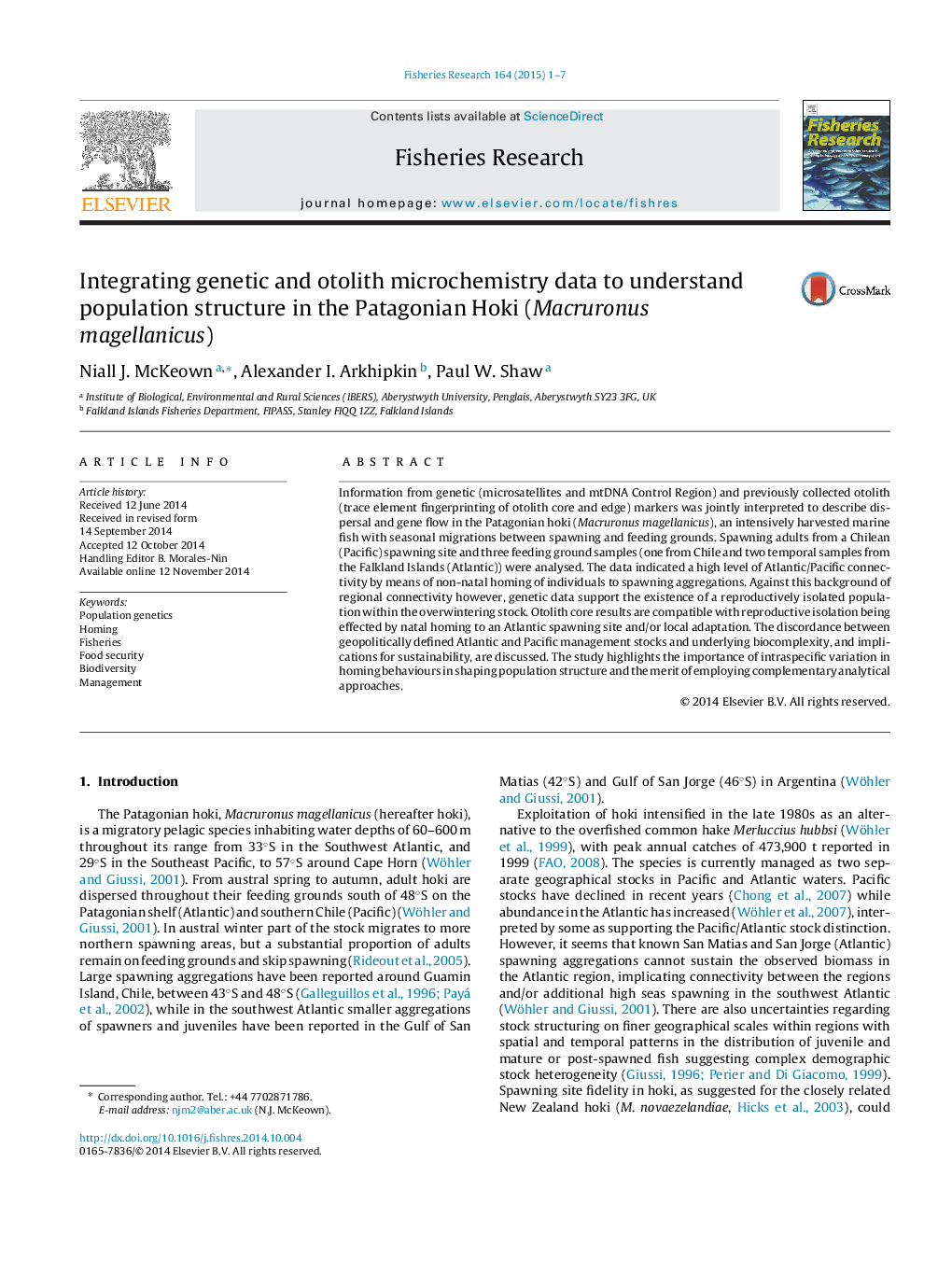| Article ID | Journal | Published Year | Pages | File Type |
|---|---|---|---|---|
| 6385657 | Fisheries Research | 2015 | 7 Pages |
Information from genetic (microsatellites and mtDNA Control Region) and previously collected otolith (trace element fingerprinting of otolith core and edge) markers was jointly interpreted to describe dispersal and gene flow in the Patagonian hoki (Macruronus magellanicus), an intensively harvested marine fish with seasonal migrations between spawning and feeding grounds. Spawning adults from a Chilean (Pacific) spawning site and three feeding ground samples (one from Chile and two temporal samples from the Falkland Islands (Atlantic)) were analysed. The data indicated a high level of Atlantic/Pacific connectivity by means of non-natal homing of individuals to spawning aggregations. Against this background of regional connectivity however, genetic data support the existence of a reproductively isolated population within the overwintering stock. Otolith core results are compatible with reproductive isolation being effected by natal homing to an Atlantic spawning site and/or local adaptation. The discordance between geopolitically defined Atlantic and Pacific management stocks and underlying biocomplexity, and implications for sustainability, are discussed. The study highlights the importance of intraspecific variation in homing behaviours in shaping population structure and the merit of employing complementary analytical approaches.
